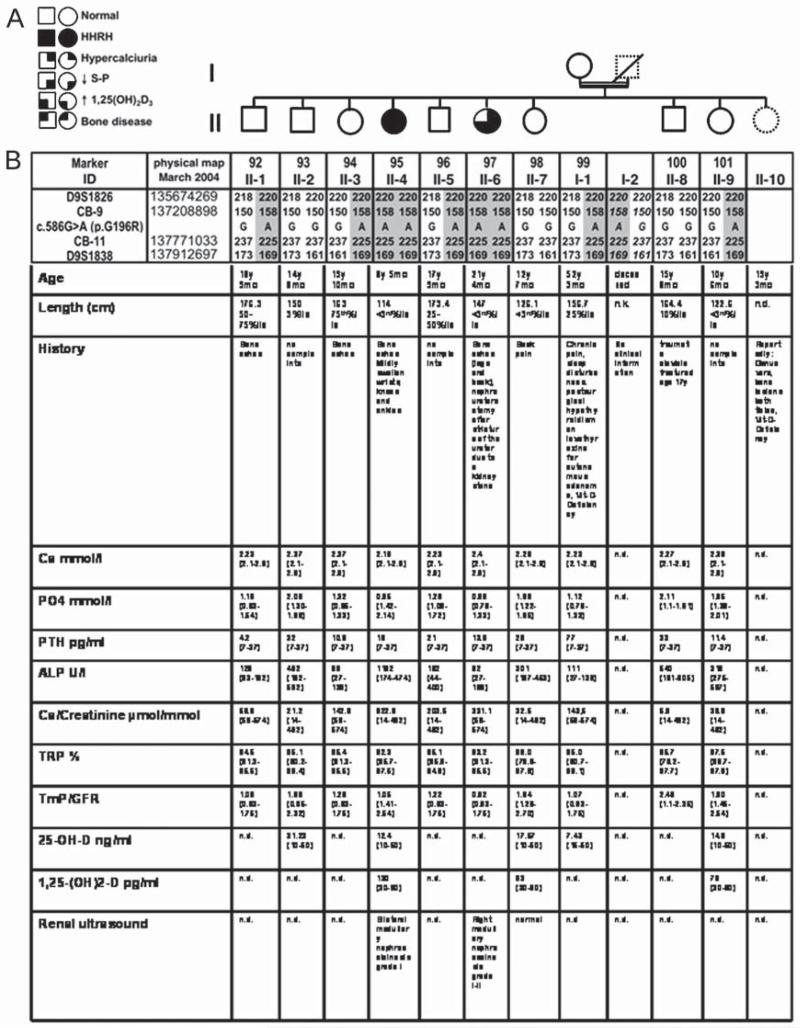Fig. 1.
Haplotype analysis of the kindred. A: Pedigree: Solid circles or squares indicate individuals, who developed rickets during childhood along with renal phosphate-wasting, hypophosphatemia, and hypercalciuria. Open symbols indicate individuals who were healthy. Samples from individuals with dashed lines were unavailable for genotyping. B: Haplotypes for chromosomal region 9q34 between markers D9S1826 and D9S1838. Alleles for microsatellite markers are designated as bp or coded; the haplotype associated with HHRH is depicted by numbers on gray background. The father’s haplotype is deduced (numbers in italic), no genotyping data are available for II-10; the mutation c.586G>A(p.G196R) was identified by nucleotide sequencing analysis and confirmed on at least two independent PCR products. Clinical and biochemical parameters of the available family members are prior to therapy. Age-related reference ranges in brackets. n.d. = not done.

